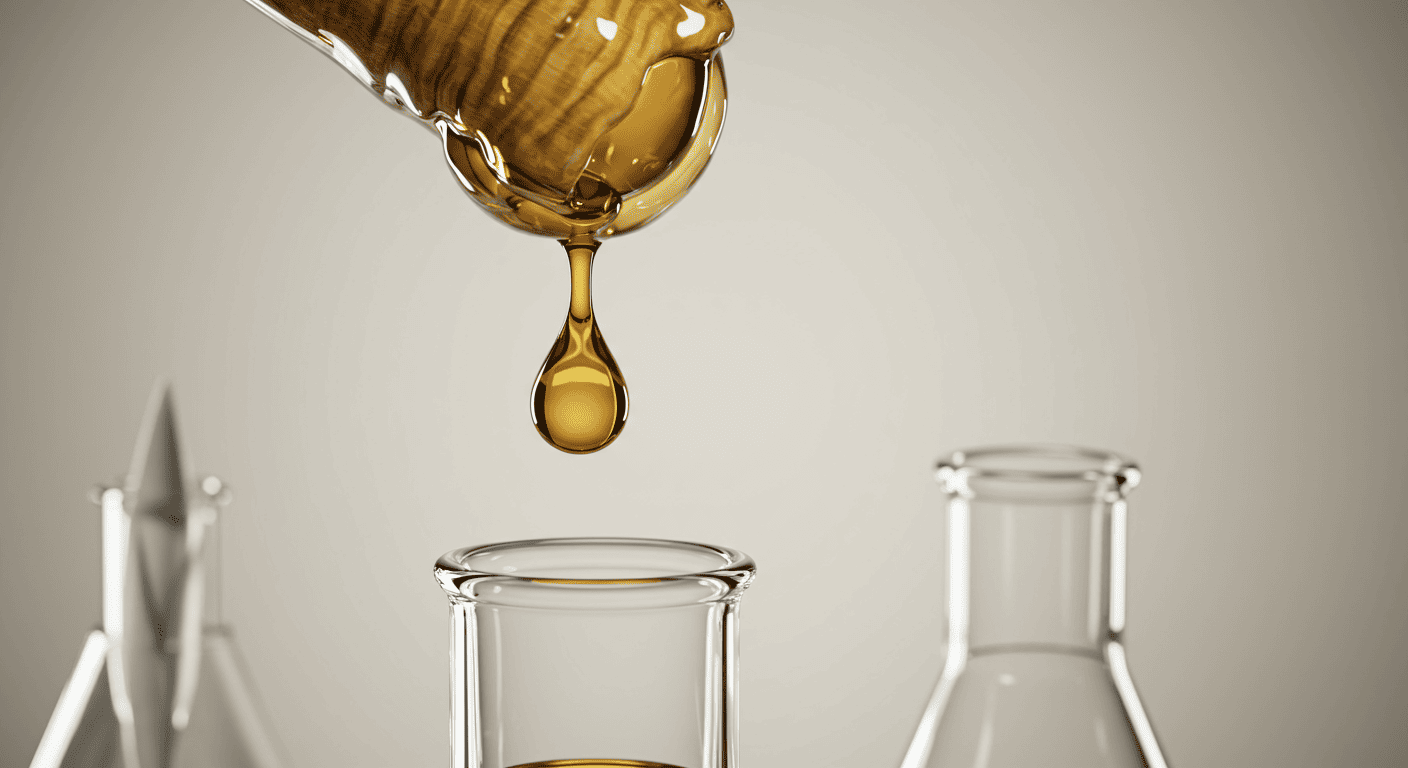In the exclusive world of high perfumery, certain ingredients are revered not just for their scent, but for the legacy and artistry they represent. Among these, iris stands as a titan, often called “liquid gold” due to its astronomical price and profound olfactory character. The true value, however, lies not in the delicate purple flower familiar to many, but in its humble, subterranean rhizome, the orris root. This component undergoes a multi-year journey of patient transformation, a process more akin to aging fine wine than to typical floral extraction. It is a testament to the idea that in perfumery, time is often the most crucial and luxurious ingredient of all.
The creation of iris absolute is a slow and deliberate alchemy, a practice that starkly contrasts with the modern world’s demand for speed and instant gratification. After being harvested, the iris rhizomes are cleaned, dried, and then aged in a controlled environment for a minimum of three to five years. During this extended curing period, a remarkable biochemical metamorphosis occurs within the roots, developing the precious molecules known as iron ions, which are responsible for the signature powdery, violet-like scent. Without this patient wait, the rhizomes would possess none of their celebrated aromatic qualities, making this aging step entirely indispensable.
This dedication to meticulous, time-consuming processes is a hallmark of creating truly elite fragrance components, setting a standard for quality and complexity. Understanding the origins of such ingredients deepens the appreciation for the final perfume, revealing a story of patience and natural artistry. As we explore the secrets held within the earth by the iris root, we can also appreciate the versatile role of geranium, another botanical that demonstrates how perfumers masterfully select and substitute ingredients to achieve specific artistic and commercial goals in fragrance creation.
The Patient Harvest: A Multi-Year Journey
The journey of iris essential oil begins not with distillation, but with agriculture and immense patience. Iris pallida or Iris germanica plants are cultivated for several years before their rhizomes are even considered ready for harvesting. Once unearthed, these roots are not immediately processed; instead, they enter the most critical phase of their development: curing. This stage is a masterclass in patience, as the rhizomes are stored in cool, dry conditions for at least three years, and sometimes up to five or even six.
This extended aging period is not merely for storage; it is a fundamental biochemical requirement for developing the fragrance. Freshly harvested iris rhizomes have a starchy, earthy, and distinctly non-aromatic character. The iconic scent is born from the slow, enzymatic oxidation of precursor molecules within the root into irones, the ketones that deliver the prized cool, powdery, and slightly woody aroma. Rushing this process is impossible, as the chemical transformation requires this specific length of time to complete naturally.
The conditions during the curing stage are meticulously controlled to prevent mold or rot, which would destroy the valuable crop. The rhizomes are regularly turned and inspected, ensuring that the slow, internal alchemy can proceed uninterrupted. This multi-year commitment of land, labor, and storage space is the foundational reason for the ingredient’s high cost, long before a single drop of oil is ever extracted.
From Solid to Scent: The Alchemy of Extraction
After years of patient aging, the iris rhizomes become rock-hard and must be prepared for extraction. They are first shattered into smaller pieces and then pulverized into a fine, flour-like powder. This grinding process is crucial as it dramatically increases the surface area of the material, which is essential for an efficient and successful extraction of the aromatic compounds locked deep within the dense root structure.
The fragrant powder is then subjected to steam distillation, a process that separates volatile compounds from solid matter. However, the result is not a liquid essential oil as one might expect with other botanicals. Instead, the distillation yields a waxy, fat-like solid substance known as “orris butter” or “beurre d’iris.” This material contains a high concentration of myristic acid, a fatty acid that solidifies at room temperature, alongside the fragrant irones.
To obtain the final, usable product for perfumery, the orris butter must undergo further refinement to create the absolute. This purification is a multi-step process:
- The orris butter is washed with ethanol to dissolve the aromatic compounds, leaving the non-fragrant waxes and fatty acids behind.
- The alcoholic solution is then chilled to extremely low temperatures, causing any remaining waxes to solidify.
- Finally, the solution is filtered to remove all solids, and the alcohol is gently evaporated, leaving behind the pure, highly concentrated iris absolute.
The Scent of Liquid Gold: Unpacking the Aroma
The olfactory profile of pure iris absolute is one of the most complex and sophisticated in all of perfumery, bearing little resemblance to a simple floral note. Its primary character is a refined, soft powderiness, often compared to the scent of violets, but with significantly more depth and tenacity. This is layered with distinct earthy and woody facets, a direct olfactory link to the rhizome’s long maturation period spent in the earth and in storage. The resulting aroma is subtle yet incredibly persistent, a cool and elegant whisper rather than a loud declaration.
In a fragrance composition, iris absolute performs several critical functions that justify its esteemed status. It serves as an exceptional fixative, anchoring more volatile top and middle notes and extending the overall life of the perfume on the skin. Beyond its technical role, it imparts a unique, almost tactile texture to a scent, creating a feeling of velvety smoothness and luxury that is nearly impossible to achieve with other materials.
The versatility of iris is another key to its value, as it harmonizes beautifully across different fragrance families. It can soften the edges of a sharp green fragrance, add a cool counterpoint to a warm oriental blend, or elevate a simple floral bouquet into a work of art. Whether used as the central theme or a subtle supporting note, iris brings an unmistakable touch of timeless elegance and refined structure to any composition.
The Price of Patience: Deconstructing the Cost
The primary driver behind the staggering cost of iris absolute is the immense amount of time invested in its production. From planting the crop to harvesting the rhizomes and then aging them for three to five years, the process is a long-term agricultural commitment. This multi-year cycle ties up land and resources, representing a significant upfront investment with a delayed return, a business model that inherently carries a high cost.
Beyond time, the production is incredibly labor-intensive at every stage, from manually harvesting and cleaning the roots to carefully controlling the conditions of the long curing phase. The subsequent distillation and purification processes are also complex and require specialized equipment and expertise. This combination of intensive manual labor and sophisticated chemical procedures contributes significantly to the final price of the precious absolute.
Ultimately, the most critical factor is the incredibly low yield. It can take up to one ton (1,00g kilograms) of aged iris rhizomes to produce just two kilograms of orris butter, which is then further reduced to obtain the pure absolute. This means that an enormous quantity of raw material, which has already been cultivated and aged for years, is required to create a very small amount of the final product, making iris absolute a perfect storm of rarity, time, and labor.
Frequently Asked Questions
In the context of perfumery, “iris” typically refers to the plant itself (Iris pallida or Iris germanica). “Orris” or “orris root” is the specific term for the plant’s rhizome (the underground root-like stem) that has been harvested, dried, and aged for use in creating fragrance materials like orris butter and iris absolute.
While chemists have successfully created synthetic molecules called ionones that mimic the violet-like aspect of iris, they cannot fully replicate the entire olfactory experience. Natural iris absolute possesses a unique complexity, with buttery, woody, and earthy nuances that come from the hundreds of different molecules present. Synthetics can provide a similar effect but lack the depth, texture, and natural elegance of the real ingredient.
Iris absolute is considered a base note in perfumery, meaning its molecular structure is large and heavy, causing it to evaporate very slowly. Due to its excellent fixative properties, its scent is incredibly tenacious. It can last for many hours on the skin and is often one of the last notes to fade from a fragrance composition, providing a long-lasting and elegant foundation.

